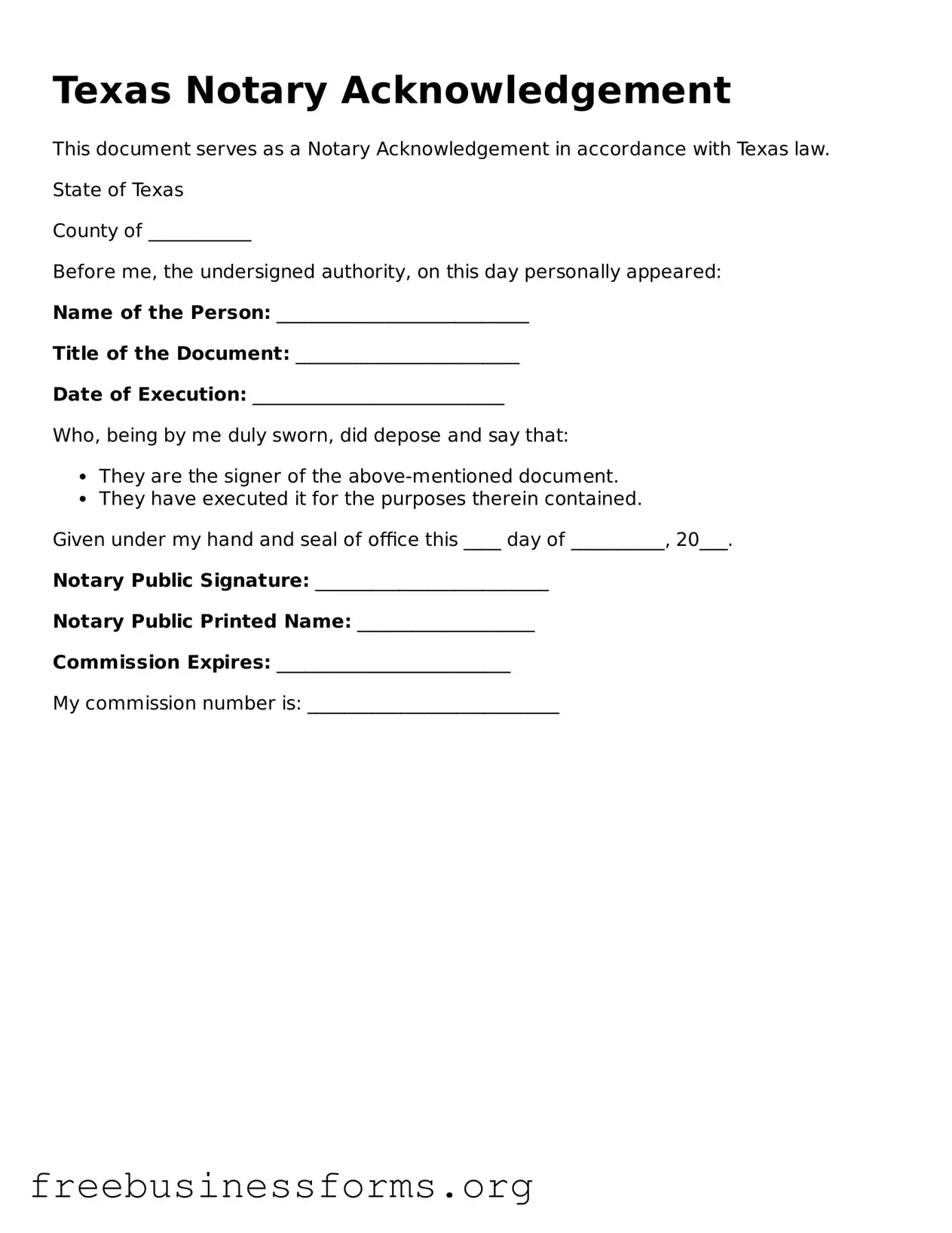Blank Notary Acknowledgement Template for Texas
The Texas Notary Acknowledgement form is a legal document used to verify the identity of individuals signing a document. This form ensures that the signer is who they claim to be and that they are signing willingly. Understanding its purpose and proper use is essential for anyone involved in legal transactions in Texas.
Open Form Here
